
Understanding accelerated learning and its significance in science education
To better understand what accelerated learning is, let’s first examine what it’s not. It isn’t about moving quickly and cramming a couple of years of less rigorous, shallow lessons to cover more content.
What is accelerated learning?
With accelerated learning, grade-level content is presented with any necessary support for students regardless of current levels of skills or knowledge. Instead of slowing down to bridge learning gaps, teachers prioritize and integrate content and skills with a growth mindset. Think of it as scaffolding up, not down. It’s about moving all students forward.
The purpose of accelerated learning in science curriculum
When there is learning loss–and there’s always a certain amount of learning loss in classrooms full of students with different school experiences–it can seem overwhelming for teachers to teach grade-level content AND fill the gaps.
Science classes are no different than any other subject. With learning acceleration, teachers don’t change the focus to topics that weren’t mastered in previous grades. Instead, those concepts are woven into the content, exposing learners to lessons that are appropriate for the grade level while keeping the instruction flexible, deep, and challenging for all students. It allows teachers to teach conceptually and empower students to advance with grade-level or above content.
Exploring the stages of accelerated learning for student achievement
When students engage in the learning process, student achievement follows. Accelerated learning can potentially change how students think about achievement because it invites active participation regardless of skill level. Rather than seeing success as something out of reach, accelerated learning helps students understand that they are up for the challenge. It’s a shift that doesn’t replace the need for remediation. Instead, supports are baked into the lessons.
Stage 1: Engaging students with interactive science inquiry
Teaching science concepts through investigation and involvement in STEM activities sums up interactive science from kindergarten to grade 12. Accelerated learning builds on that idea as it aims to bring meaningful problems and projects to the learning process. Students are encouraged to use interactive science skills when a science program uses inquiry-based learning strategies, such as the 5E Model. The 5E Model guides students as they engage, explore, explain, elaborate, and evaluate the foundations and principles of science. These opportunities to individualize learning and connect students through science inquiry and analysis make science education come alive!
Stage 2: Facilitating evidence-based learning through virtual labs
Interactive classroom activities, such as virtual labs, help even the most challenging scientific concepts make sense. There are many advantages to using virtual labs, such as flexibility, safety, unlimited time, and immediate feedback. Students can repeat experiments as needed to comprehend the grade-level concepts fully.
Gizmos virtual labs use an inquiry-based instructional approach that promotes investigation and discovery. Interactive simulations can either replace or support traditional lab experiments in the science curriculum. The evidence-based design helps students visualize abstract science theory and fosters learning through active participation.
Stage 3: Creating science proficiency with STEM activities
STEM activities that require students to act as scientists and engineers in the classroom focus on learning by doing. An accelerated learning approach to STEM projects for kids keeps students moving forward and prepares them for success in current grade-level content. Real-world learning opportunities foster curiosity, sense-making, and possibly future careers in STEM.
How can teachers use accelerated learning in STEM? The first step is to prioritize content when planning with an eye for future learning and building foundations. Monitor student progress and add support as needed for personalized learning. Give plenty of opportunities for students to practice new skills and process information while moving through content.
Using virtual labs like Gizmos for accelerated science learning
Gizmos are designed to accelerate science learning by allowing students to tap into their own powers of inquiry, experimentation, and understanding as they explore science content. They work through challenging concepts by analyzing and testing to find solutions with grade-level content and appropriate support built into each Gizmo. Teachers can even use Gizmos to introduce concepts to students and make hands-on lab time more productive and meaningful.
Take a closer look at how Gizmos explore science concepts at different grade levels and help students develop the conceptual skills needed for more advanced in-person labs.
Heredity, Diversity, and Evolution Gizmos
Inheritance: Create aliens with different traits and breed them to produce offspring. Determine which traits are passed down from parents to offspring and which traits are acquired. (Grades 3-5)
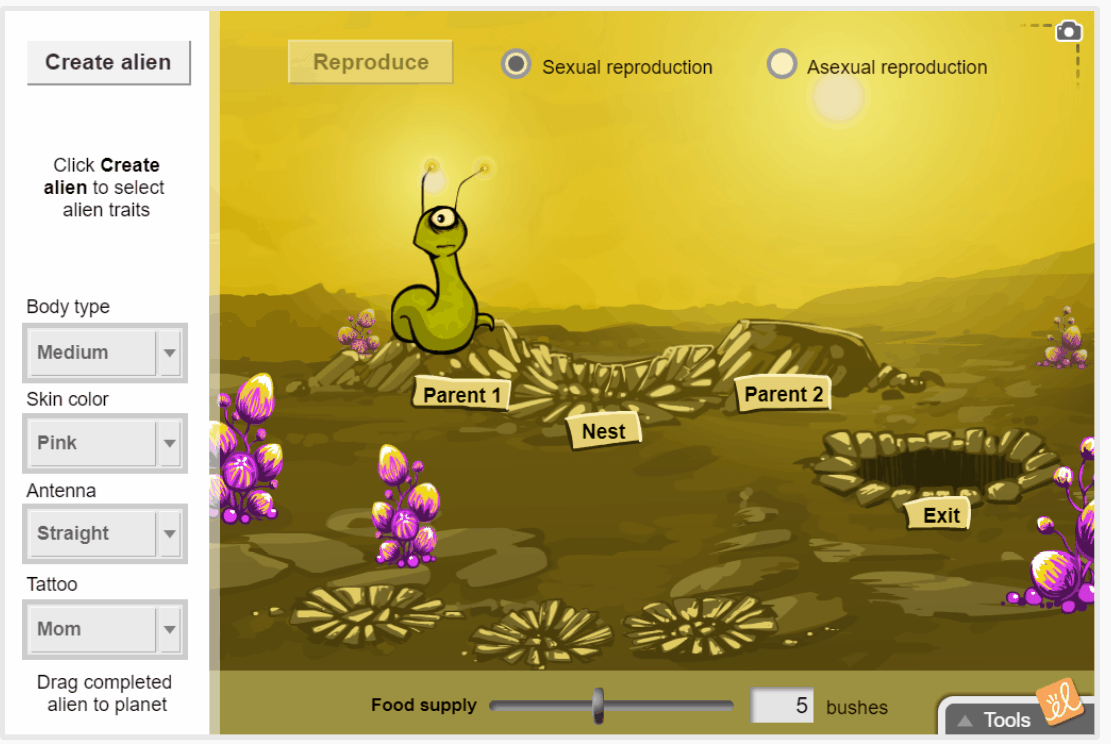
Inheritance Gizmo
Building DNA: Construct a DNA molecule, examine its double-helix structure, and then go through the DNA replication process. Learn how each component fits into a DNA molecule, and see how a unique, self-replicating code can be created. (Grades 6-8)
.gif)
Building DNA Gizmo
Human Karyotyping: Sort and pair the images of human chromosomes obtained in a scan. Find differences in the scans of the various patients to find out specific things that can cause disease, as well as determine the sex of the person. (Grades 9-12) For more details about teaching this Gizmo, check out the Professional Development video.
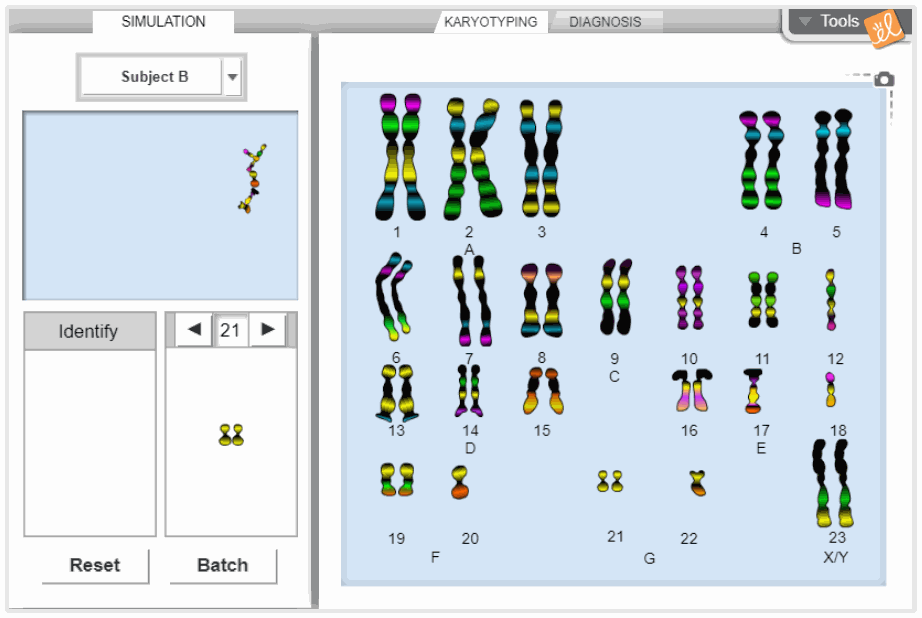
Human Karyotyping Gizmo
Meowsis STEM Case: As a geneticist in an animal hospital, students learn about genetic changes in meiosis to determine the reason why a male cat can have calico fur coloring. (Grades 9-12)
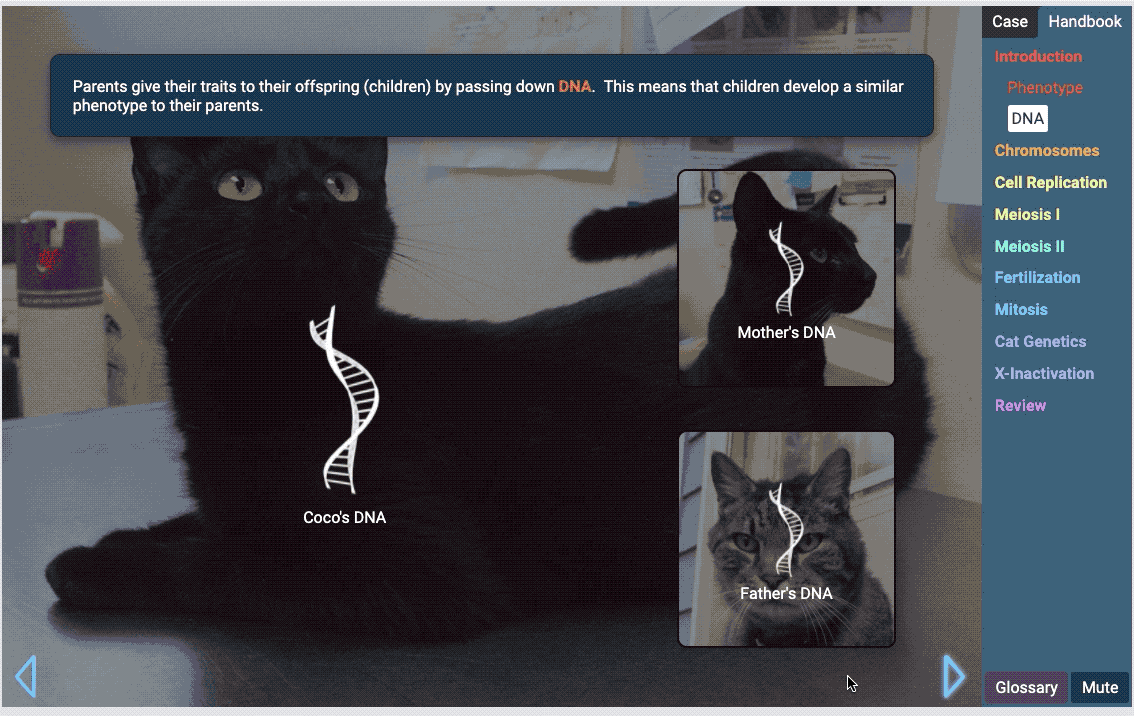
Electricity and Magnetism Gizmos
Circuit Builder: Create circuits using batteries, light bulbs, switches, fuses, and a variety of materials. Examine series and parallel circuits, conductors and insulators, and the effects of battery voltage. (Grades 3-5)
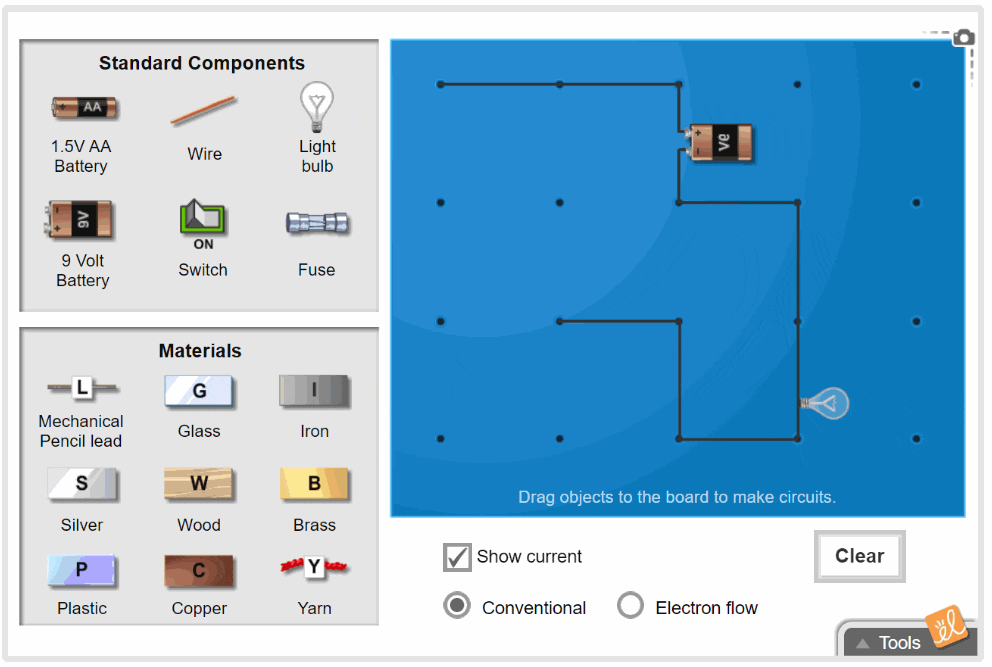
Circuit Builder Gizmo
Charge Launcher: Launch a charged particle into a chamber. Charged particles can be added into the chamber to influence the path of the moving particle. The launch speed can be changed as well. Try to match a given path by manipulating the fixed particles in the chamber. (Grades 6-8) If you’re looking for more information about this Gizmo, take a moment to watch this Professional Development video.
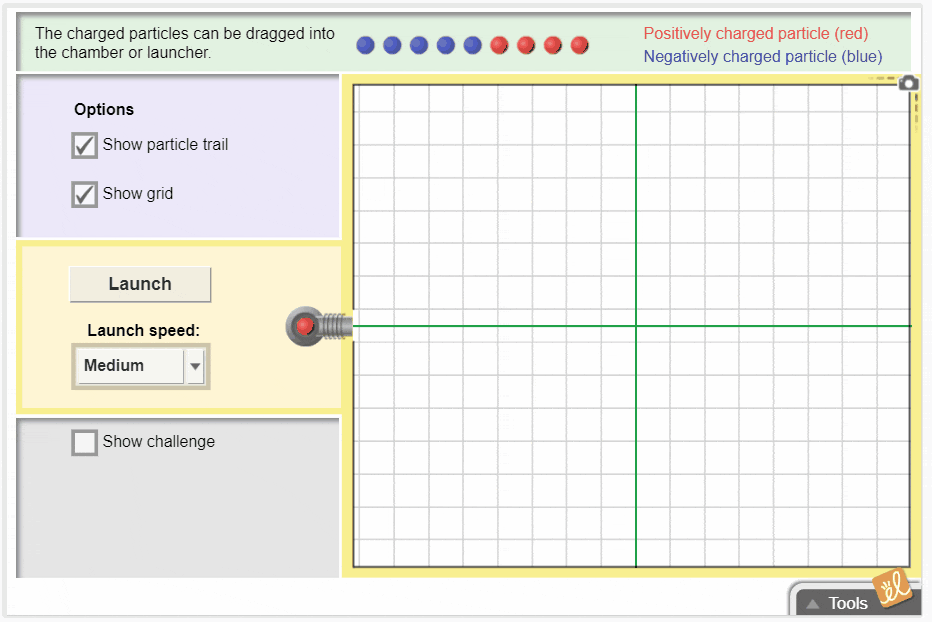
Charge Launcher Gizmo
Pith Ball Lab: Pith balls with positive, negative, or no electrical charge are suspended from strings. The charge and mass of the pith balls can be adjusted, along with the length of the string, which will cause the pith balls to change position. Distances can be measured as variables are adjusted, and the forces (Coulomb and gravitational) acting on the balls can be displayed. (Grades 9-12)
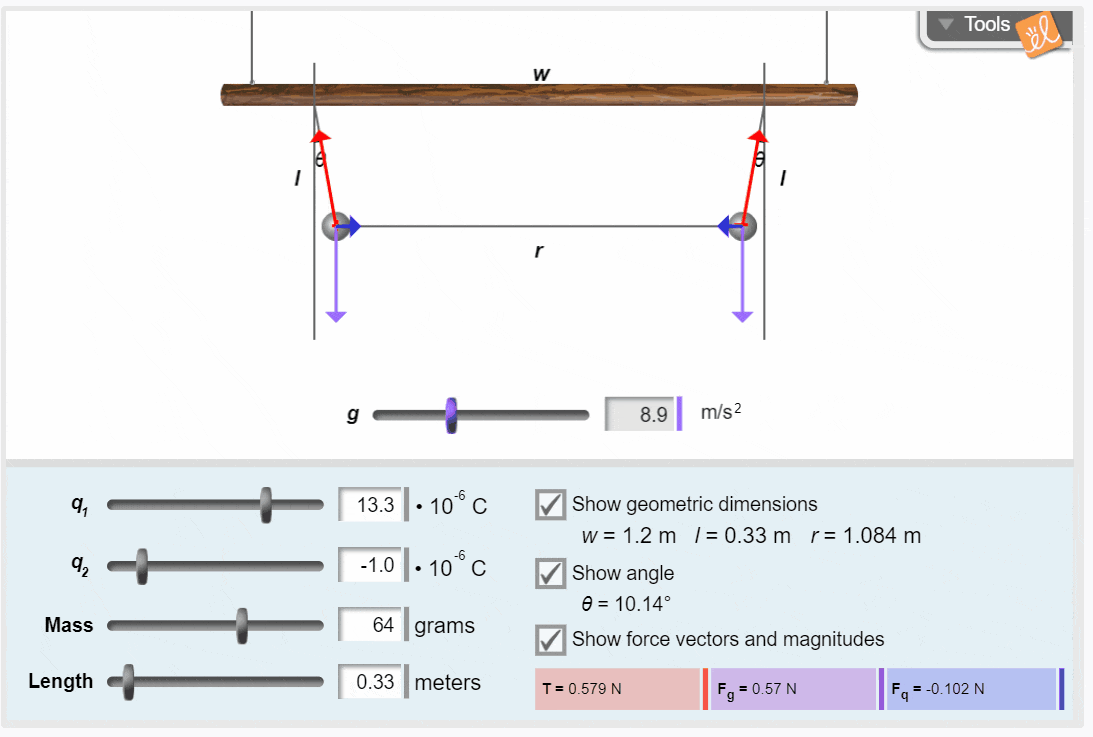
Pith Ball Lab Gizmo

Gizmos deliver topics by grade level so teachers can feel confident about providing content that challenges all students at the right time. We even have specially curated Gizmos theme collections. Take a trial and see for yourself!